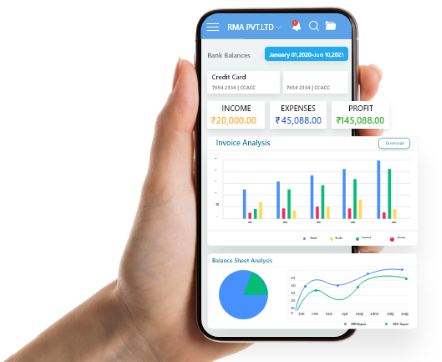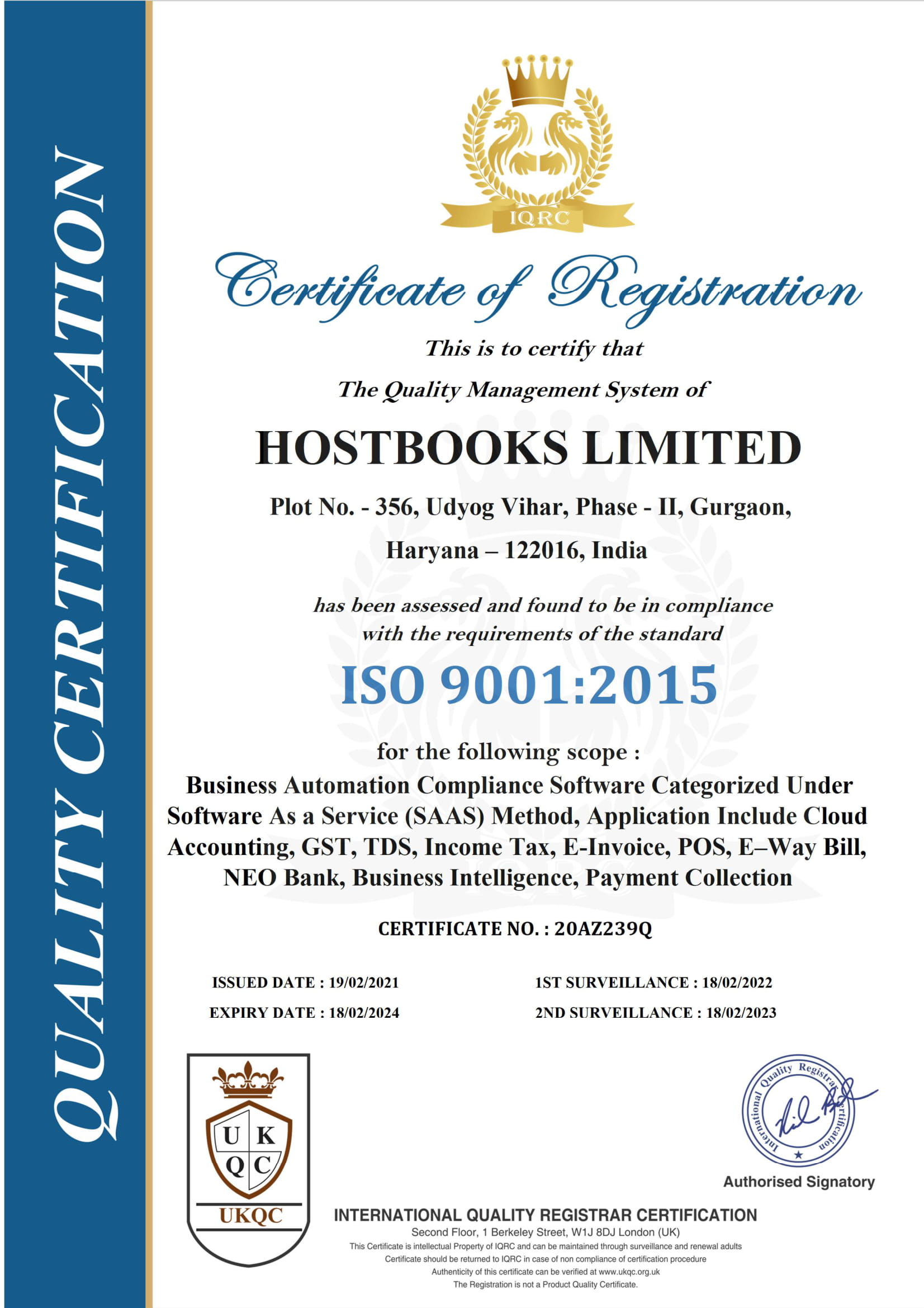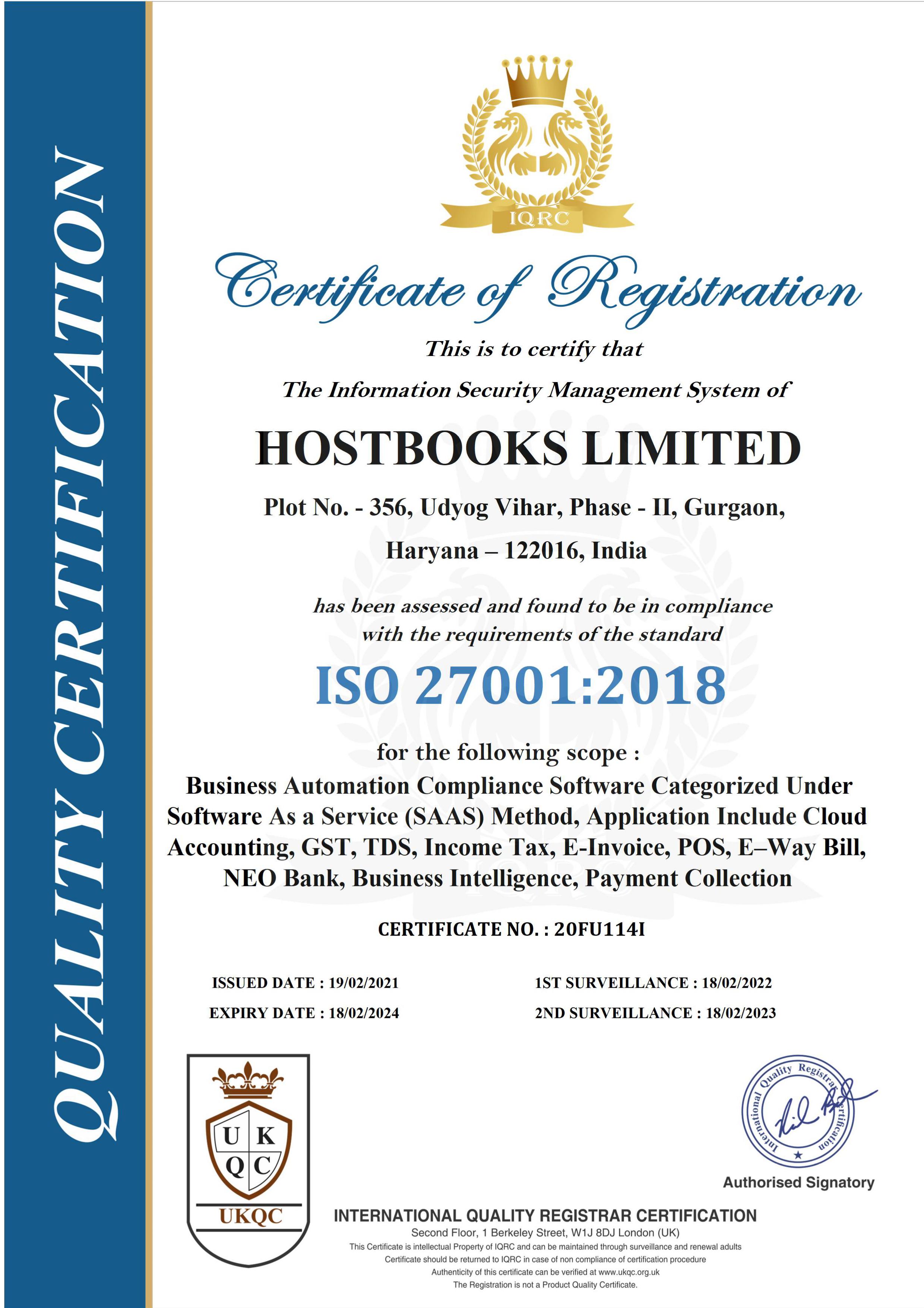
JARGONS FOR GST
December 23, 2017Goods and Services Tax (GST) is a destination-based indirect tax that brought in simplicity in the taxation system and reduced the previous cascading tax effect. The primary objective behind the implementation of GST was to unify multiple indirect taxes into a single tax, introducing efficiency into the tax administration. It is a technology-driven tax meaning everything from registration, filing returns, and application for refund is to be done online from the GST portal.
Every taxpayer must declare transaction details for sales, purchases carried out in a tax period, and the tax collected and paid in their GST return. After filing the GST returns, you will pay the resulting tax liability to the government. All taxpayers and business owners who have registered under the GST system must file GST returns based on their business or transactions. Let us dive into different types of return forms in GST which are to be filed either monthly, quarterly, or annually depending on various factors along with its due dates and penalties for late filing.
Types of GST returns
| 1 | GSTR-1: Return for outward supplies |
| 2 | GSTR-2A: Auto-populated return for inward supplies |
| 3 | GSTR-3B: Summary of inward and outward supplies |
| 4 | GSTR-4/CMP-08: Return for composition dealers |
| 5 | GSTR-5: Return for non-resident taxable persons |
| 6 | GSTR-6: Return for input service distributors |
| 7 | GSTR-7: Return for taxpayers deducting TDS |
| 8 | GSTR-8: Return for e-commerce operators collecting TCS |
| 9 | GSTR-9: Annual return for all normal taxpayers |
| 10 | GSTR-9A: Annual return for composition dealers |
| 11 | GSTR-9B: Annual return for e-commerce operators collecting TCS |
| 12 | GSTR-9C: Return for taxpayers whose accounts audited by a CA |
| 13 | GSTR-10: Return for the taxpayer whose GST registration is canceled |
| 14 | GSTR-11: Return for Unique Identification Number holders |
GSTR-1: Return for outward supplies
GSTR1 is a return form filed by a normal taxpayer stating their outward supplies. Put simply, it is a monthly or quarterly return showcasing the sales transactions and also the debit and credit notes issued by a business in a tax period. Additionally, any amendments made to the sales invoices, even if it’s made in previous tax periods, should be reported in the GSTR-1 return. This return form must be filed monthly by all normal taxpayers, except in the case of small taxpayers having an annual turnover of up to ₹1.5 crores in the previous fiscal, who can file it quarterly.
The due date for filing GSTR-1 is the 11th of the next month and for quarterly filing, the due date is end of the month succeeding the quarter for which the return is to be filed. However, the due date can be extended for any class of taxpayers; the notification for the same is issued by the government, highlighting the reasons.
GSTR-2A: Auto-drafted return for inward supplies
It is a return containing details of all inward supplies which gets auto-populated once the supplier uploads the details of outward supplies in GSTR-1/GSTR-5 In other words, GSTR-2A contains the details of purchases made from a registered supplier during a tax period. GSTR-2A is a read-only document meaning you can only download it to view a list of all of the invoices from your suppliers during a particular month.
GSTR-3B: Summary of inward and outward supplies
It is a monthly self-declaration form filed by all normal taxpayers by furnishing the summary of all inward and outward supplies, availed input tax credit, tax liability, and taxes paid. GSTR-3B cannot be revised and does not require the matching of invoices between purchasers and suppliers, meaning both the suppliers and recipients file this return form separately. Hence, there is no delay in the filing of GSTR-3B, helping taxpayers to avoid late fees and interest.
If in case your tax liability is zero or there were no outward or inward transactions during a particular month, you need to file “Nil Return”. The due date to file GSTR-3B is the 20th, 22th and 24th of the next month for which the return is to be filed.
CMP-08 : Return for composition dealers
CMP-08 is a quarterly return form filed by all registered taxpayers who have opted for the composition scheme under GST. The taxpayers with an annual turnover of up to ₹1.5 crores can sign up for this scheme and pay taxes at a fixed rate. Unlike normal taxpayers who have to file multiple returns every month, taxpayers opting for composition scheme have to file CMP-08 every quarter which has now replaced the GSTR-4.
The due date for filing CMP-08 is 18th of the month succeeding the quarter for which such a return is to be filed. For instance, a composition dealer needs to file a GST return for the quarter of April-June 2019. In that case, the due date for filing CMP-08 would be July 18, 2019.
GSTR-5: Return for non-resident taxpayers
GSTR-5 is a monthly return filed by non-resident taxable persons, who are registered under GST and carrying out business transactions in India. This return contains details relating to all outward supplies, inward supplies, credit/debit notes, tax liability or tax paid, any interest, penalty or fees paid, and any other amount payable under the act. Moreover, non-resident taxpayers are only is required to file only GSTR-5 for each month they are registered under GST in India.
Most importantly, non-resident taxable persons do not have a fixed place of business or residence in India, and only supplies goods or services occasionally. The due date for filing GSTR-5 is the 20th of the next month for which the return is to be filed. However, if the non-resident is registered under Section 27 of the CGST Act, 2017 he/she must file GSTR-5.
GSTR-6: Return for input service distributors
GSTR-6 is a monthly return filed by an Input Service Distributor (ISD), containing the details of all the invoices (Services) on which the input tax credit has been received and distributed by the ISD. This return form gives a summary of the total input tax credit available for distribution in a particular tax period. Hence, the details of the invoices furnished in Form GSTR-6 by an ISD are available to each recipient of the credit and visible in part B of their Form GSTR-2A.
The due date to file GSTR-6 is the 13th of the next month for which the return is to be filed. For instance, if an ISD needs to file the return for July 2019, the deadline to file GSTR-6 would be August 13, 2019.
What is GSTR-6A?
It is an auto-generated form based on the details provided by the suppliers of an Input Service Distributor (ISD) in their GSTR-6 return. GSTR-6A is a read-only return form meaning any changes that you want to make in GSTR-6A need to be done while filing GSTR-6.
GSTR-7: Return for taxpayers deducting TDS
It is a monthly return filed by the deductors who are required to deduct TDS (Tax deducted at source) under GST. GSTR-7 contains details of TDS deducted, the liability towards TDS, TDS refund claimed, and interest, late fees, etc. paid or payable. The due date of GSTR-7 is the 10th of the next month in which the deduction was made. For instance, the due date for filing GSTR-7 for August 2019 would be September 10th, 2019.
What is GSTR-7A?
It is an automatically generated form that gets created once the deductor provides details in GSTR-7 on the GST portal. If the details furnished by the deductor in their GSTR-7 are accepted by the deductee, a TDS certificate is issued to the deductee electronically.
GSTR-8: Return for e-commerce operators collecting TCS
It is a monthly return for an e-commerce operator who is required to collect TCS (tax collected at source) under GST. This return form contains details of the supplies of goods and services made to customers through an e-commerce portal and the tax collected for the same. Moreover, the operator can also make changes to the details of the supplies provided in an earlier tax period.
The due date to file GSTR-8 is the 10th of the succeeding month in which TCS was collected. The operator also needs to deposit the collected tax by the 10th of the following month in which such a collection was made. Furthermore, an annual statement needs to be filed by the operator in the prescribed format in GSTR-9B. This return must be filed by 31st December following the end of each fiscal.
GSTR-9: Annual return for normal taxpayers
It is an annual return filed by every registered person under GST. GSTR-9 contains the details of all outward supplies, inward supplies, HSN codes, as well as the taxes payable and paid. It is a consolidation of all the monthly or quarterly returns filed during a financial year, including GSTR-1, GSTR-2A, and GSTR-3B. GSTR-9 is to be furnished by all the taxpayers except casual taxable persons, non-resident taxable persons, taxpayers opting composition scheme, input service distributors, and persons paying tax under section 51 or section 52 of the CGST Act.
The due date to file GSTR-9 is 31st December following the end of the financial year for which the return is being filed. This annual return needs to be filed through the GST portal.
GSTR-9A: Annual return for composition dealers
Every taxpayer opting for composition scheme under GST have to file this annual return in every financial year. In each fiscal, in addition to the quarterly returns, this return is filed by all composition dealers. It consolidates the details of all the quarterly returns filed by a composition dealer during a financial year, such as inward and outward supplies, taxes paid, tax refunds, late fees, input credit availed or reversed, etc.
The due date of filing GSTR-9A is December 31st following the end of the fiscal for which the return needs to be filed. For instance, if a composition dealer needs to file the annual return for the financial year 2017-18 and 2018-19 has been waived off to file GSTR-9A.
GSTR-9B: Annual return for e-commerce operators collecting TCS
Every electronic commerce operator required to collect TCS under section 52 should file the annual return form GSTR-9B. This return consolidates details furnished by an e-commerce operator in his/her monthly returns filed during a particular fiscal. The due date for filing GSTR-9B is December 31st following the financial year for which the return is to be filed.
GSTR-9C: Return for taxpayers getting accounts audited by a CA
All taxpayers registered under GST with an annual turnover above ₹2 crores during a financial year must get his/her accounts audited by a Chartered/Cost Accountant. GSTR-9C is a reconciliation statement that needs to be filed by such taxpayers along with annual return GSTR-9 and audited financial statements. Moreover, GSTR-9C needs to be filed for every GSTIN which means one PAN may have to file multiple GSTR-9C returns.
The due date to file GSTR-9C is the same as that for filing annual return GSTR-9 which is 31st December of the succeeding year on which your accounts have been audited.
Now for F.Y 2018-19 the due date has been extended by 30-06-2020 for those having turnover Rs. 5cr or more.
GSTR-10: Return for the taxpayer whose GST registration is canceled
It is a final GST return filed by a registered person whose GST registration has been canceled or surrendered. Such a person registered under GST does not include input service distributor (ISD), non-resident taxable person, the person collecting TDS or TCS, and the person opting for the composition scheme. The reason for filing this final return is to ensure that the taxpayer clears his/her outstanding tax liability.
The registered person who GST registration has been canceled should file GSTR-10 within 3 months from the date of cancellation or cancellation order, whichever is earlier.
GSTR-11: Return for Unique Identification Number holders
This return is to be filed by persons who have been provided a Unique Identification Number (UIN). UIN is allotted to a registered person so that he/she can get a refund for GST paid on goods and services purchased by them in India. It is issued for foreign embassies and diplomatic missions who are not required to pay tax in India so that they get a refund of the amount paid to tax authorities. GSTR-11 contains details of inward supplies and the amount claimed as a refund.
The deadline for filing GSTR-11 is the 28th of the succeeding month on which the inward supplies have been received by the UIN holders. Hence, it is not filed every month and is filed on a case-to-case basis, and when the supplies are made.
Make your business GST compliant with HostBooks.
File your returns anywhere anytime with ease.

Try HostBooks
SuperApp Today
Create a free account to get access and start
creating something amazing right now!















